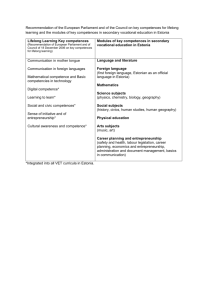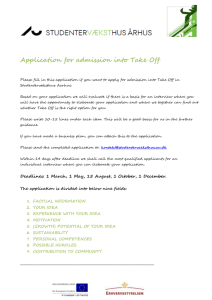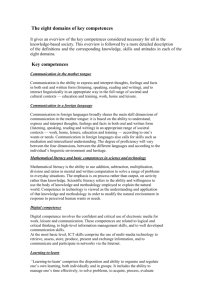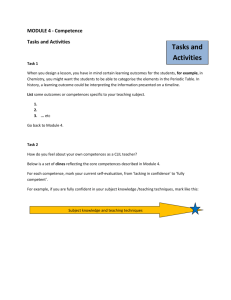Aims and Objectives of TRANSIt Course
advertisement
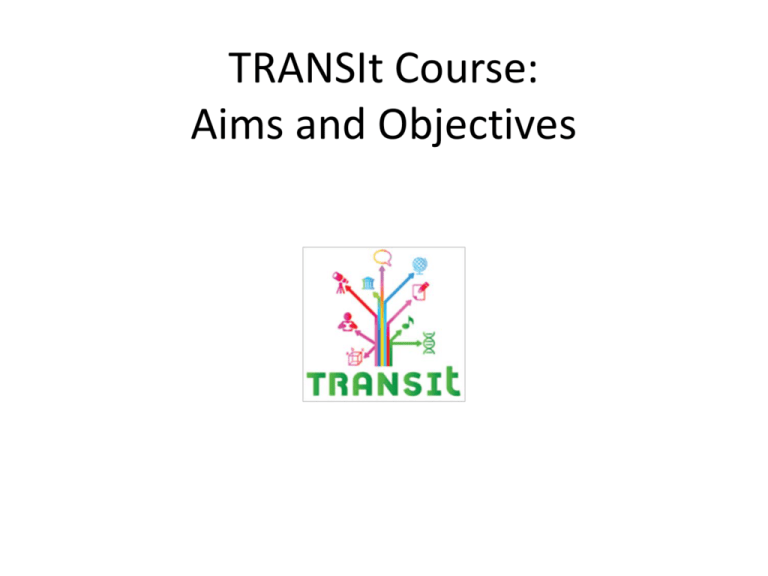
TRANSIt Course: Aims and Objectives Aim The aim of the TRANSIt modules is to help teachers acquire and reinforce the skills and knowledge to design cross-curricular activities that support the key competence acquisition of their students. TRANSIt Objectives • To improve teachers’ awareness of key competences • To improve teachers’ professional skills regarding the didactics and e-assessment of key competences by use of e-portfolios • To support teachers to bring European and national policies into practice Why is this important? Key competences in the EU framework are those that ‘all individuals need for personal fulfillment and development, active citizenship, social inclusion and employment’. Cross-curricular key competences epitomize integrated learning – they: • have a focus in all subjects and all activities in a school • are the responsibility of all school staff • represent goals common to the whole curriculum • are mutually complementary. Who defined the key competences? The European Reference Framework of Key Competences was defined in the Recommendation on key competences for lifelong learning adopted by the Council and the European Parliament in December 2006 as a result of five years of work by experts and government representation collaborating within the Open Method of Coordination. Key competences • Communication in the mother tongue • Communication in foreign languages • Mathematical competence and basic competences in science and technology • Digital competence • Learning to learn • Social and civic competences • Sense of initiative and entrepreneurship • Cultural awareness and expression Eight Key Competences: The European Framework for Key Competences for Lifelong Learning identifies 8 key competences necessary for personal fulfillment, active citizenship, social inclusion and employability in a knowledge society. 1. Communication in the mother tongue 2. Communication in foreign languages 3. Mathematical competence and basic competences in science and technology 4. Digital competence 5. Learning to learn 6. Social and civic competences 7. Sense of initiative and entrepreneurship 8. Cultural awareness and expression. Why TRANSIt Competences ? The Recommendation defines 8 key competences. TRANSit focuses on the last five, cross-curricular in nature. TRANSIT aims to contribute to the development of creativity, adaptation to the rapidly changing circumstances, intercultural and multilingual competences, social development, “learning to learn” competences and an improved perception of one’s own capacity to solve problems. TRANSIt: transversal key competences for lifelong learning focuses on five competences. The five competences mentioned here are transversal. They are cross curricular and pervasive. They also support acquisition of all key competencies • • • • • Digital competence Learning to learn Social and civic competences Sense of initiative and entrepreneurship Cultural awareness and expression.

